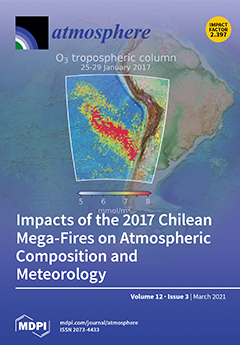There has been an increase in the network of mass rapid transit (MRT) and the number of automobiles over the past decades in the Taipei metropolitan area, Taiwan. The effects of these changes on PM
2.5 exposure for the residents using different modes
[...] Read more.
There has been an increase in the network of mass rapid transit (MRT) and the number of automobiles over the past decades in the Taipei metropolitan area, Taiwan. The effects of these changes on PM
2.5 exposure for the residents using different modes of transportation are unclear. Volunteers measured PM
2.5 concentrations while commuting in different modes of transportation using a portable PM
2.5 detector. Exposure to PM
2.5 (median (range)) was higher when walking along the streets (40 (10–275) µg/m
3) compared to riding the buses (35 (13–65) µg/m
3) and the cars (15 (8–80) µg/m
3). PM
2.5 concentrations were higher in underground MRT stations (80 (30–210) µg/m
3) and inside MRT cars running in underground sections (80 (55–185) µg/m
3) than those in elevated MRT stations (33 (15–35) µg/m
3) and inside MRT cars running in elevated sections (28 (13–68) µg/m
3) (
p < 0.0001). Riding motorcycle also was associated with high PM
2.5 exposure (75 (60–105 µg/m
3),
p < 0.0001 vs. walking). High PM
2.5 concentrations were noted near the temples (588 ± 271 µg/m
3) and in the underground food court of a night market (405 ± 238 µg/m
3) where the eatery stalls stir-fried and grilled food (
p < 0.0001 vs. walking). We conclude that residents in the Taipei metropolitan area may still be exposed to high PM
2.5 during some forms of commuting, including riding underground MRT.
Full article





